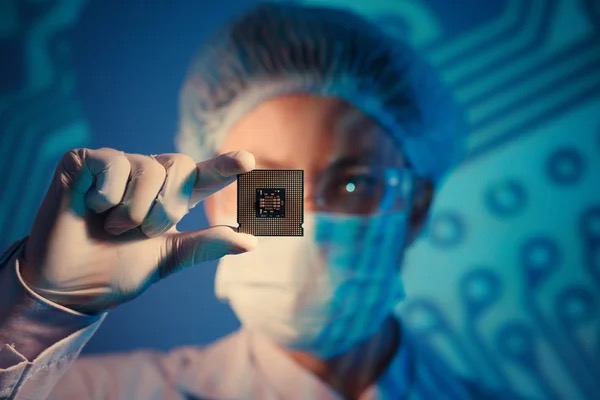We'll respond by email within one business day.
What Can We Help You With?

3D Printed Electronics 2023: Market Study & Forecast
$1,247.50 – $2,247.50
| Select User License | Single User License (one computer), Group User License (Up To Five Computers), Enterprise User License (Unlimited Computers Within Your Organization) |
|---|
Request Excerpt
Table of Contents
Executive Summary
Defining the value propositions of 3D Electronics Printing
Miniaturisation
Design Freedom
Reshoring and localisation9
Sustainability
Challenges to market growth
Key players in the 3D Electronics Printing Space
The industry remains consolidated around a small number of player
Low-cost 3DEP providers reduce barriers to entry
Forecasting the growth of the market
Chapter One: Trends, opportunities and challenges
Background and context to this report
Reading this report
Trends, Opportunities, and challenges in the 3D printing electronics space
The current and future potential for 3D printing electronics technologies and applications
Mapping the current competitive landscape
Building a future view of the industry and forecasting its opportunity for growth
The current 3D printing electronics space
3D Electronics Printing prepares to move from the lab to the factory
Electronics prototyping remains the go-to application
Moving PCB prototyping in-house
Standing at the precipice of commercial 3D printed electronics
Notable trends driving the direction of the industry
Sustainability
Reducing material consumption in prototyping
Recyclability through design
Miniaturisation of devices reducing life cycle impact
Supply Chain security and compression
Supporting Semiconductor production using conventional 3D printing
Creating helpful incentives to produce semiconductors (CHIPs) act
Opportunities
Internet of things
Conformal printing of antenna within IoT devices
Volumetric IoT
Flexible IoT
Low volume, high mix electronics become increasingly viable
Miniaturisation of electronics
Off-setting the limitations of physics through compact circuit design
Interconnects
Passives
Embedded and stacked components and vertically integrated ICs
Protecting Intellectual Property via moving to in-house prototyping
Freedom of Design
Top, bottom and side-mounted components, adding another angle to circuit boards
Higher density routing with multi-directional vias
Challenges
Volume production
Overcoming production volume with SMT integration in the print process
Continuing materials development
Building a seamless digital thread for 3D printed electronics
Delineation of electronic computer-aided design and mechanical computer-aided design begin to blur
Emerging software solutions to bridge the gap
Chapter Two: Technology, Applications and Markets
Technologies
Technologies capable of printing conductive materials
Polymer Powder Bed Fusion
Vat Photopolymerization
Technologies capable of printing static-dissipative materials
Polymer Powder Bed Fusion
Vat Photopolymerisation
Material Extrusion
3D Electronic Printing Technologies
Inkjet Printing
Aerosol Jet Printing
Extrusion-Based Printing
Materials
Conductive Inks
Silver Nanoparticle Inks
Extrusion materials and limitations
Dielectric inks and resins
Applications
PCBs
3D printed multi-layer PCBs
Future of printed PCBs
Connectors and Interconnects
Antennas, Amplifiers and Transceiver
3DEP supporting advanced antenna production
Multi-material printing of next-generation antenna
Rise of 6G
Capacitors
Sensors
Quantum sensors
Beyond the PCB: 3DEP innovations in next-generation components and applications
Optoelectronics
Batteries
Lab-on-chips
Chapter Three: Market players
Nano Dimension, Israel, 2012
Nano Dimensions attempts to acquire Stratasys
Financial performance
Technology-Dragonfly IV
Materials
Partnerships
Optomec, United States, 1997
Technology
Aerosol Jet Printer Portfolio
Aerosol jet HD2
Aerosol Jet AJ Flex
Aerosol Jet Print Engine
Bot Factory, United States, 2013
Ceradrop, France, 2006
Ceradrop Technology
F-serie
X-Serie
Industrial platform
Chemcubed, United States, 2014
NeoTech, Germany, 2006
Technology
15X BT
45XG4
PV Nanocell, Israel, 2010
Voltera, Canada, 2013
Fujifilm Corporation, Japan, 1934
Technology
Panasonic, Japan, 1918
Additive Electronics, Germany, 2022
Notion Systems, Germany, 2012
nScrypt, United States, 2002
Nano3DPrint, United States, 2013
Entry into the professional space with the D4200S
Chapter Four: Ten year forecasts
Methodology
Pricing
Service revenue
Industry
3D printer categorisation
Total market
Exhibit 4.1: Total market for 3D Electronics Printing, by USD$ revenue
Exhibit 4.2: Total market for 3D Electronics Printing, by USD$ share
Exhibit 4.3: Total market for 3D Electronics Printing, by YoY growth change Hardware
Exhibit 4.4: 3D Electronics Printing Hardware Growth, by revenue and YoY change
Exhibit 4.5: 3D Electronics Printing Hardware Growth, by printer type
Exhibit 4.6: 3D Electronics Printing Hardware Shipments and Install Base
Exhibit 4.7: 3D Electronics Printing Hardware Shipments by Printer Category
Exhibit 4.8: 3D Electronics Printing Install Base by Printer Category
Exhibit 4.9: 3D Electronics Printing Hardware, by Industry
Exhibit 4.10: 3D Electronics Printing Hardware, by Industry Share Material
Exhibit 4.11: 3D Electronics Printing Material Revenue Growth and Year-on-Year Growth
Exhibit 4.12: 3D Electronics Printing Material Revenue by Material Type
Exhibit 4.13: 3D Electronics Printing Material Revenue Share by Type
Exhibit 4.14: 3D Electronics Printing Material Revenue by Printer Category
Exhibit 4.15: 3D Electronics Printing Material Revenue by Printer Category Share
Exhibit 4.16: 3D Electronics Printing Material Revenue by industry Services
Exhibit 4.17: 3D Electronics Printing Service Revenue Growth and Year-on-Year Growth
Exhibit 4.18: 3D Electronics Printing Service Revenue by provider
Exhibit 4.19: 3D Electronics Printing Service Revenue by Share
About Additive Manufacturing Research
About the Analyst
Acronyms and Abbreviations Used In this Report
The 3D electronics printing (3DEP) market is expected to experience significant growth in the coming years. This is due to the advancements in printing technology and platform capability, alongside the ongoing development and demonstration of the applications of 3D electronics printing. The market is projected to achieve a 10-year CAGR of 37%. The market size for 3D electronics printing is also expanding, with an estimated total market value of $0.3 billion in 2023, which is expected to increase to $7.9 billion by 2033.
This report describes the value propositions of 3DEP, the challenges to market growth, key players in the 3DEP space, and detailed market data and forecasting.
Companies or organizations covered in this report include, but are not limited to: Ceradrop, Nano Dimension, NeoTech, Optomec, FujiFilm, Voltera, BotFactory, nScrypt, J.A.M.E.S., NextFlex, ChemCubed, PV Nanocell, Panasonic, Additive Electronics, Nano3DPrint, and Notion Systems.



